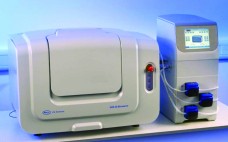Rapid progress is occurring in the field of stem cell therapy research, and increasing numbers of products will begin reaching the market in the near future. But new cell therapy treatments must fit into a competitive and highly regulated healthcare environment. Succeeding in that environment requires alignment between a company’s business model and its manufacturing strategy. Read the full text of this article in the PDF (Login required).
Sponsored Content
Production of Viral Vectors Using the iCELLis® Fixed-Bed Bioreactor System: Beyond Mesenchymal Stem Cells — Gene-Modified Cell Therapy, Gene Therapy, and Exosomes
In the past few years, the resurgence of cell-based immunotherapies — and, by extension, gene therapies — has accelerated as products move rapidly from academic research laboratories into commercial development. A successful clinical trial by St. Jude Children’s Research and the University College London of a gene therapy for hemophilia B was a seminal translational event (1), as was the licensing of the University of Pennsylvania’s gene-modified chimeric antigen receptor T-cell technology (CAR-T) for leukemia by Novartis (2). CAR-T cells…
Single-Use Bioreactors and Microcarriers: Scalable Technology for Cell-Based Therapies
Cell-based therapies hold promise for treating many acute and chronic diseases (1). Optimism surrounding that therapeutic potential has driven the initiation of multiple clinical trials in pursuit of such treatments. Procedures for preparing these therapeutic agents begin with selective isolation of cells from desired tissues. That is followed by ex vivo expansion of cells of desired phenotype and functionality. Once expanded to acceptable levels, cells are stored to preserve their viability during transportation to treatment facilities. The final step in…
Ask the Experts: Core Technologies Expand Opportunities for Cell Therapy Manufacturing
Pall Life Sciences has long been known for its expertise in processing and filtration equipment for the biopharmaceutical industry. In recent years, the company has broadened its offerings in upstream manufacturing by expanding its core capabilities in the single-use, bioreactor, and microcarrier arenas, with unique and innovative technologies for cultivation of cells to be used as therapies. Read the full text of this article in the PDF (Login required).
Positioning Tools, Technologies, and Talents for Cell Therapies: An Interview with Harvey Brandwein
On 12 March 2015, BPI publisher Brian Caine and editor in chief Anne Montgomery spoke with Harvey Brandwein, Pall’s vice president of business development, at the company’s Port Washington, NY, facility. Pall’s director of marketing for cell therapies, Alain Fairbank, also provided her thoughts on the evolution of tools and technologies for this market sector. Knowing that this interview would become one of the concluding chapters in Pall’s special issue with BPI, we reviewed a number of topics covered earlier,…
Featured Products and Services
Accelerator Development Services Applications: Bioprocess consulting, process development, and qualification Features: Pall Life Sciences supports customers with an experienced team of scientists and engineers — from on-site guidance to larger projects in its own process development laboratories. PadReactor® Single-Use Bioreactors Applications: Flexible for suspension- adapted and adherent cell cultures Features: The PadReactor family of single-use bioreactors is designed for cell culture applications. These systems are linearly scalable (5–1,000 L) and suited from laboratory-scale process development to large-scale GMP manufacturing. They…
Cell Culture Media Supplementation: Effects of Peptones and CD Supplements on Performance and Protein Quality
Biotherapeutic protein production is driven by cell line, cell culture media and supplementation, and bioprocess. While improvements in cell culture media and supplementation have enabled significant advancements in bioproduction titers, optimization to meet the specific needs of individual production cell lines continues to be a key factor to achieving desired production and protein quality. This is especially relevant to the ever increasing number of biosimilar therapeutics. Not only is it desirable to achieve a cost effective level of production, it…
One-Step Seed Culture Expansion from One Vial of a High-Density Cell Bank to a 2,000-L Production Bioreactor
We describe the use of perfusion cell culturing to reduce processing time, simplify operations, and maximize equipment use in seed culture expansion processes. Seed culture expansion is commonly performed using several consecutive batch cultures. Starting from a cryopreserved cell stock, the initial culture expansion is typically performed using shake flasks, whereas the final steps are bioreactor cultures. Such a procedure is time consuming and labor intensive, and each manual interaction constitutes a contamination risk for the culture. Here, perfusion was…
Setting the Containment Standard for Customization
From the outside, you’d be forgiven for thinking of a bioprocess container as a mere box. Yet it is this box — or magic box — that transports valuable fluids, buffers, and media along your in-process storage and handling supply chain. Read the full text of this application note in the PDF (Login required).
Reduce Cost, Increase Quality, and Shorten Cycle Time in Upstream Manufacturing with Single-Use Heat Exchanger
This technical note presents the benefits of using a single-use heat exchanger and its areas of application. Successful cell culture on a large scale requires close control of the culture environment in terms of temperature, pH, removal of waste products, and addition of fresh nutrients. To produce high yields of a desired protein, precise control over such parameters at every step in a process is required. Additionally, FDA regulations require that various steps be taken to control bioburden and maintain…







